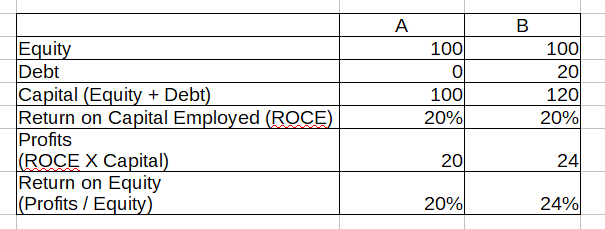Force Multipliers like levers have been around for several centuries. With a lever, the output to input ratio is in multiples. Until levers came about, you had to expend a great amount of energy in lifting heavy objects. But with levers that effort came down drastically.
The wheel barrow, hammer and several bodily motions like lifting heavy objects using the forearm are all forms of the lever. So what makes a lever? In my simple opinion, machines that produce an output many times the input. Ted Ed has done a fantastic job in explaining levers in this 4 minute video. Please leverage my finding :).
Charlie Munger says, all disciplines are connected and therefore we must freely borrow ideas from one discipline and use it in others. If life becomes better and richer with levers, not using them would be stupidity. And as Munger would say, it’s far easier to avoid stupidity than to seek brilliance. So, here are some examples of levers from the world of business:
Financial leverage. Businesses take owners’ equity and generate profits. Therefore, to generate more profits, the owners can increase their equity. Or, they can borrow money and invest in the business to improve returns on owner’s money.
See the below table. Both Businesses A and B have a return on capital employed of 20%. A uses only owner’s equity whereas B employs equity and debt and therefore generates higher profits on the same amount of equity. Therefore, debt acts as a lever in generating higher profits.

Operating leverage. Operating leverage is when profits grow faster than revenue. See the table below. A 20% growth in revenues yields a 38% growth in profits. On the other hand, a 40% growth in revenues leads to a 75% growth in profits. This usually happens where the costs don’t increase as revenue increases and as a result, profit scales much faster than revenues.

Compound Interest: If you think of it, Compound Interest itself is a lever. You invest a sum of money and you get several times that return over time.
In the 1993, letters to shareholders Warren Buffett gave the example of See’s Candies (a compounding machine). Between 1972 and 1992, $ 18 Million was invested into See’s Candies, which resulted in a sum of $410 M of profits in the same period. (A 23 X kind of multiplier.)
But See’s candy sales in the same period (1972-1992) increased from $29 million to $196 million. Moreover, profits at See’s grew even faster than sales, from $4.2 million pre-tax in 1972 to $42.4 million last year. For an increase in profits to be evaluated properly, it must be compared with the incremental capital investment required to produce it. On this score, See’s has been astounding: The company now operates comfortably with only $25 million of net worth, which means that our beginning base of $7 million has had to be supplemented by only $18 million of reinvested earnings. Meanwhile, See’s remaining pre-tax profits of $410 million were distributed to Blue Chip/Berkshire during the 20 years for these companies to deploy (after payment of taxes) in whatever way made most sense.
Branding: Building a brand is like building a giant lever. But once built, it makes selling very easy. Imagine selling toothpaste without the Colgate name on it and you will know the power of the brand.
Reading. A common corporate phrase is “don’t reinvent the wheel”. But not reading and not learning is reinventing the wheel (akin to not using levers when available). Life is too short to do everything yourself; therefore we must leverage on the findings, learning, mistakes of others to shorten the learning curve.
I have made a pretty long compilation of some excellent business books and you can leverage that.
Just as we invented tools to make our lives better, we need to find mental tools to make thinking better. And as I have said before, better thinking habits lead to better decisions and a better life.
Cheers!
(Post Script: I was originally going to title this blog as “levers”. But Force Multipliers sounded more powerful and more intriguing.)
Featured image: Photo by Florian Olivo on Unsplash

Great post Vikas.
The link shared for the compilation of books isnt working, could you suggest me an alternative link to it.
LikeLike
Thank you Guru. I think that page is deactivated.
LikeLike